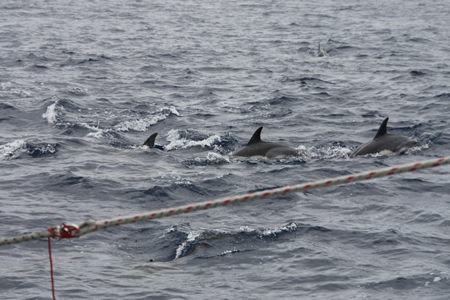These bulletin blogs represent news about Finavon and the South Esk, and my views as a riparian owner. They are not the views of any other organisation, nor are they designed to promote the interests of any individual or organisation other than Finavon Castle Water and factors affecting the fishery. Tony Andrews
Tagging of Dee salmon in the past has shown that only 30% or so of all fish tagged are later recorded, so we shouldn’t be surprised that to date the Usan radio-tagging project is showing a total of 24 fish recorded out of 113 tagged.
There is a little bit more news of the South Esk. Of the 16 salmon that have entered the river 6 have dropped below the Bridge of Dun receiver, leaving 10 in the river. Of these 10 salmon 2 are now upstream of the A90 bridge at Finavon, while the other 8 are hunkered down somewhere in the middle or lower river between the A90 and Bridge of Dun.
The 24 salmon recorded to date are:
South Esk 16 (6 dropped back to unknown positions downstream of Bridge of Dun)
North Esk 5
Tay 3
There are a number of interesting data emerging from the project.
1. Despite reasonable water levels only 20% of South Esk tagged fish have made any attempt to move upstream, which may surprise people used to thinking that early running salmon in the South Esk hightail it to the Glens!
2. It is unlikely that there have been technical problems with the transmitters, although we should be aware of that possibility.
3. Variations in the time spent in the sea between tagging and entry into one of the monitored rivers is 1 minimum to 31 days maximum.
4. The relationship between PFA (Pre Fishery Abundance, orthe number of returning fish arriving off the coast) and the number of fish entering the monitored rivers suggests that the PFA numbers may disperse elsewhere and to rivers beyond the range of the project’s monitored rivers.
5. It has been shown that drought and seasonal differences affect the proportion of tagged fish entering monitored rivers. In the case of tagging experiments on other rivers in October drought conditions it has been shown that numbers as low as 10% of the total number of tagged salmon have entered the rivers.
6. If we assume that the South Esk radio tagging project is likely to produce figures approximately the same as the 30% of salmon recorded entering the Dee after tagging – and perhaps as low as the 10% October figure in drought conditions – we should not be surprised at the results to date.
Salmon returning to our rivers run the gauntlet as they approach the European continental shelf. Fortunately our returning salmon do not travel in tightly-knit shoals, and are therefore less vulnerable to the highly organised predation by dolphins and porpoises on shoals, as seen in Sir David Attenborough’s Blue Planet.
7. Of course the big question is, “what has happened to the unaccounted 78.8% of radio-tagged salmon?” We should be careful to avoid too much speculation at this point, although it is inevitable that some of us will be thinking in terms of predation, poaching, and dispersal elsewhere. I think it is really important that try to avoid speculation, and let the data flow from the project and assess them scientifically at the end of Year 1.
Interesting isn’t it?
TA
